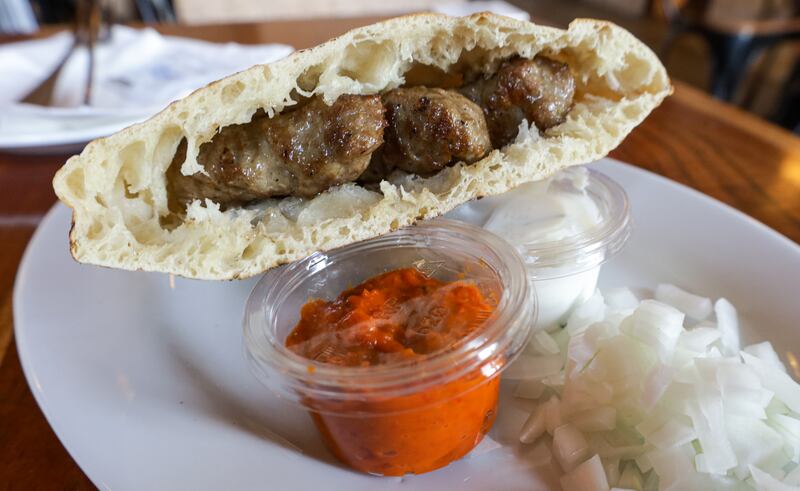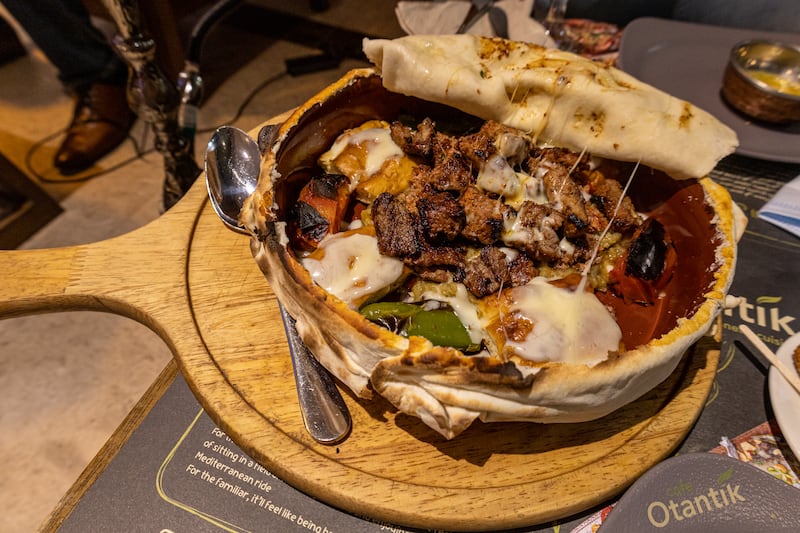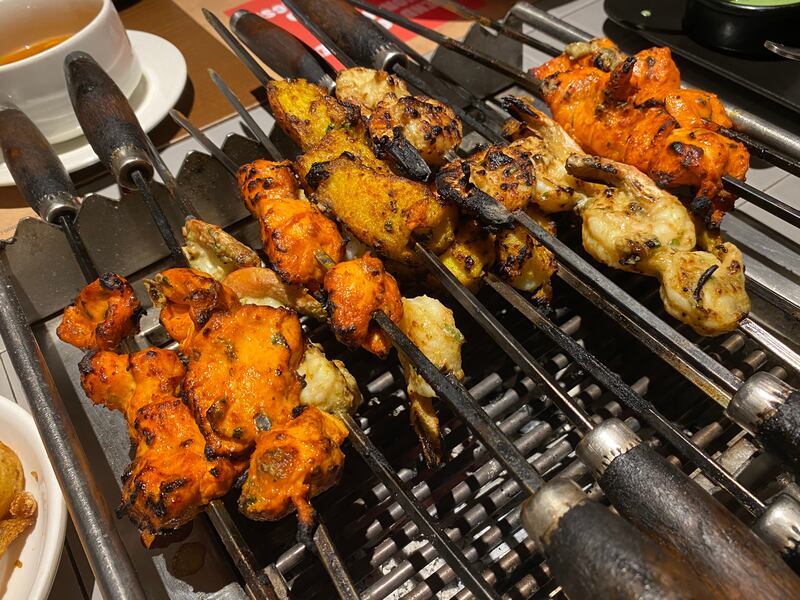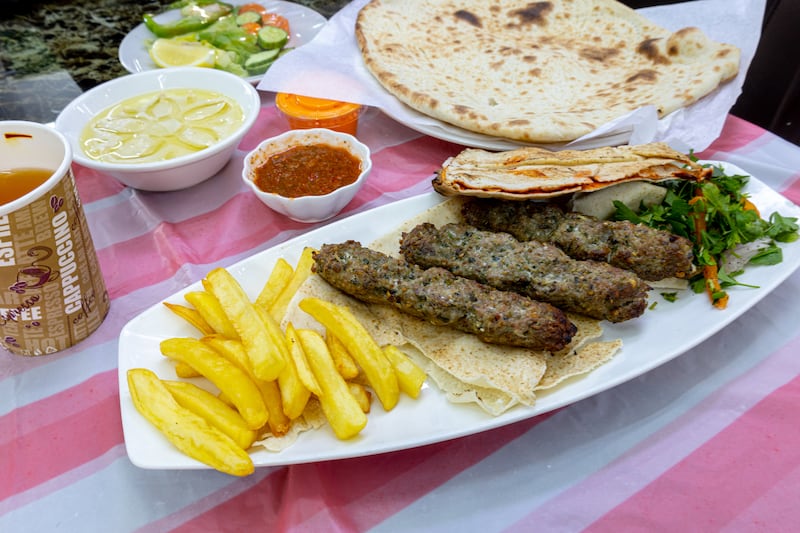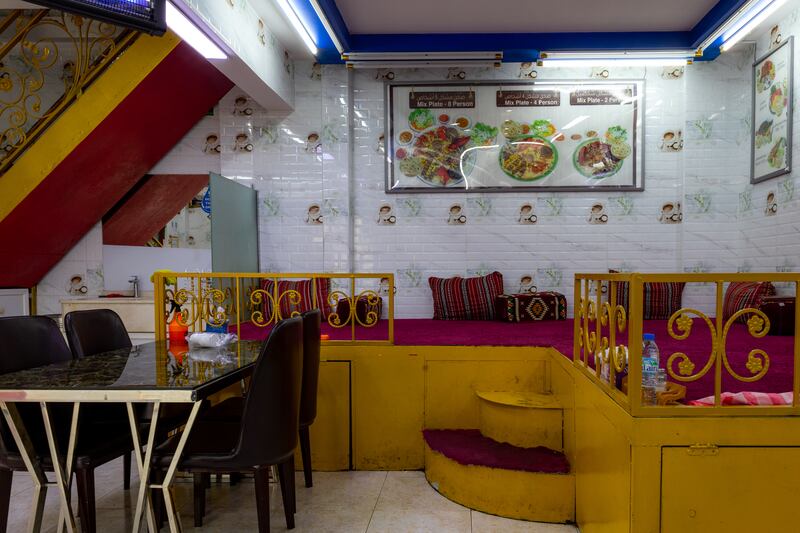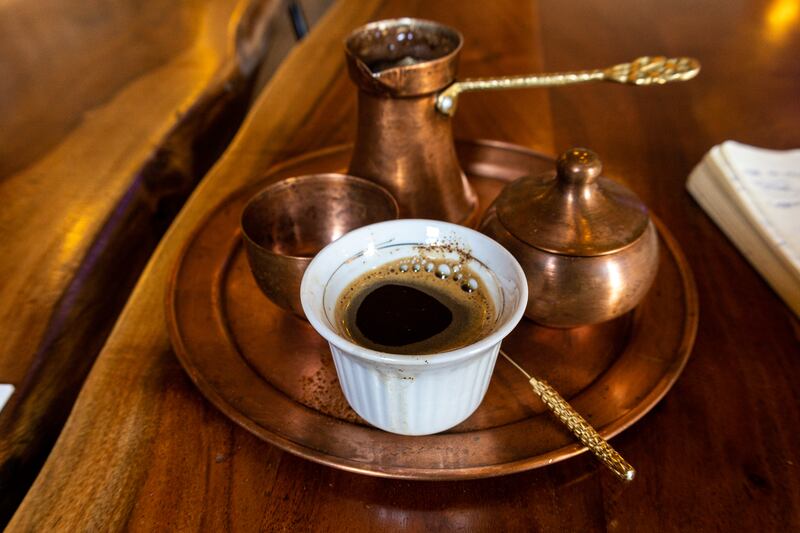There are few foods with as much ubiquity and global variation as the kebab, a meal so simple in method and preparation, and yet so regionally unique.
Kebab dishes traverse the Mediterranean from Turkey, Greece and the Levant all the way through Central Asia and the Indian subcontinent. In addition to being a common street food and quick, affordable meal, kebabs are laden with stories of migration, travel and historic trade routes.
It’s little wonder, then, that the dish is so pervasive and popular in a cosmopolitan country such as the UAE. In kitchens across Abu Dhabi, for example, this spiced and grilled meat dish is indicative of the dynamic immigrant communities rooted within the city.
At street corners and hole-in-the-wall restaurants, dishes spanning the Lebanese shish taouk, Afghan chapli kebabs, desi Bihari kababs, Bosnian cevapi, Turkish iskender and many more spiced meats sizzle on skewers, vertical rotisseries and in frying pans. In addition to incorporating the flavours native to their lands, these dishes reveal the cross-cultural mixing central to the capital’s development.
Cevapi at Bosnian Hut
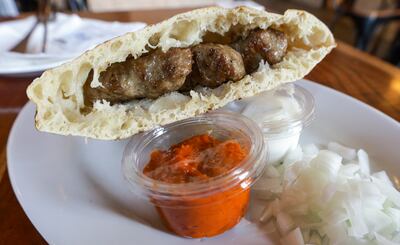
At Bosnian Hut, a restaurant nestled within Al Danah neighbourhood, the speciality cevapi, alongside a honey-roasted coffee, attracts European and Arab diners alike. Run by chef Teufik and a team that’s nearly 100 per cent Bosnian, the restaurant is committed to cultivating something of a “Little Bosnia” community vibe through its food and decor.
“We try to be as authentic as possible – and people who have been to Bosnia have come back to say that our food is almost the same as the food there,” Teufik says.
“I wanted a way to express myself when I turned to cooking. Me, personally, I like to make biryani, but I know I can’t do it better than Pakistani, Indian or Bangladeshi people. I’ve always cooked from many different cuisines, but Bosnian kebabs are something from my culture that I can passionately share with people here.”
The defining element of the Bosnian kebab, he says, is in the quality of the meat. “We don’t use too many spices, so what matters is the taste of the meat. And often, that can even change depending on the region.”
The livestock’s living conditions play a huge role in the taste and texture, he says. A sheep raised in the mountains or lush pastures and offered fresh water and produce will certainly taste richer than imported meat bought at the cheapest price.
“Spicy and hot foods are more popular in southern countries,” he says. He infers that the spice trade through the colonisation of the subcontinent and Latin America probably did not circulate into Eastern European countries, leaving culinary aficionados to instead perfect the quality of their natural produce.
Shami kebab at Kabul Afghanistan
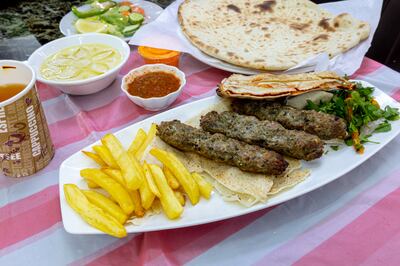
Some kebabs are focused on drawing out flavour through the quality of the meat and fat interacting with one another. At Kabul Afghanistan, a hole-in-the-wall restaurant near Madinat Zayed, the duty manager Assad Ullah explains a similar approach to Afghan kebabs. He says some food stalls in Kabul simply cook plain meat pieces with goat’s brain, allowing the fatty flavours of the brain to naturally season the meat.
The restaurant’s shami kebab – a spiced minced lamb creation cooked on a skewer over a grill – comes highly recommended. The popularity of this dish is linked to the overarching history of the Ottoman Empire. With lashings of cumin, coriander, caraway and garlic, and served alongside a warm cup of saffron tea and a heap of onions and mixed herbs, these kebabs make up a regionally common flavour palette.
“Shami,” Ullah says, “comes from the word Syria in Arabic. I’m not sure why we name the kebab after it, but there’s been a lot of migration between the Levant and Central Asian countries.” Shami kebabs are also a common home-cooked flat kebab of minced meat in South Asian kitchens – the root word shaam being the Hindi, Farsi and Urdu word for evening.
Ullah has been in Abu Dhabi for about two years, having arrived from Afghanistan for the sole purpose of opening and running the restaurant. “I think Afghan food appeals to a lot of people here. We have Arab, Pakistani and even Filipino people coming to eat here. Some nationalities in particular enjoy the food because it doesn’t have as many spicy flavours as Pakistani or Indian foods, but is still satisfying in taste.”
In the UAE, he notes that one restaurant must often adapt and master a variety of cultural dishes, as opposed to the hyper-local specialisation seen in his home town. In Afghanistan, if a restaurant or food stall makes a seekh kebab really well, they will only make that and perhaps add their own unique twist. Conversely, serving Afghan kebabs in Abu Dhabi requires slight tweaks to ensure wider appeal.
“No one in Afghanistan eats hummus with their meat, but it’s almost a requirement here,” he says. “Normally, this is a simple meal of meat and bread. Some restaurants try to create a VIP experience, but there’s really no need.”
Princess kebab at Cafe Otantik
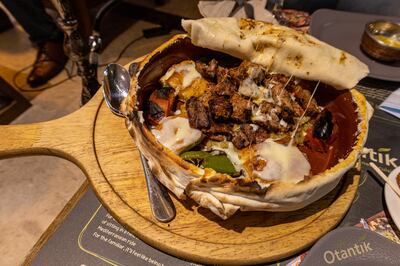
In an attempt to engage the wider Abu Dhabi community, however, larger dining establishments often focus their offerings on pan-regional recipes that mix and match spices and create fusion dishes, thereby making the kebab an everyday dish for every taste preference.
At Cafe Otantik, a Turkish restaurant in Tourist Club Area, chef Chait Yildiz incorporates the unique flavours of each major Turkish town, sampling and combining tastes from Anatolia, Bursa, Istanbul and Ankara. A rich butter sauce, tomato paste, yoghurt, and crushed aubergine and pine nut paste serve as condiments to the various meats – from doner-style iskender, to tender minced kebab. The Princess Kebab at Otantik is an amalgamation of these elements, a diverse dish of meats served over mashed aubergine alongside chargrilled peppers and thick, buttery bread covered in cheese.
“We serve many different things here, all authentic Turkish cuisine, but the more the fusion and variety, the more attractive and interesting the food becomes, even to people who are not Turkish,” says Yildiz.
Spiced kebabs at Barbeque Nation
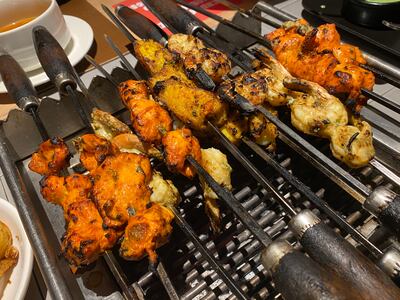
Barbeque Nation at Al Wahda Mall takes a similar approach to its Indian cuisine, elevating the simple kebab to encompass the diverse flavours found across the subcontinent. As part of an all-you-can-eat offer, skewer upon skewer is endlessly settled on top of a small pit of hot coals at the table. Here, taste and aroma are the crown jewels of each skewer – a testament to the subcontinent’s wealth of spices. From minced lamb seasoned with cardamom and saffron to coconut curried prawns, and chicken pieces marinated in chilli and tomato paste, or crushed green chilli, yoghurt and coriander, the variety showcases yet another dimension of Abu Dhabi’s kebab culture.
As a global kebab kitchen, the capital bolsters its identity as a growing centre for migrant success and cultural expression. The city is not a melting pot so much as a heaping bowl of intersecting flavours becoming slowly acquainted. Here, kebabs not only signify ethnic and geographic diversity, but also hold within their taste profiles and culinary techniques, the gustatory documentation of cultural changes that occur through the travel of people and ideas.
